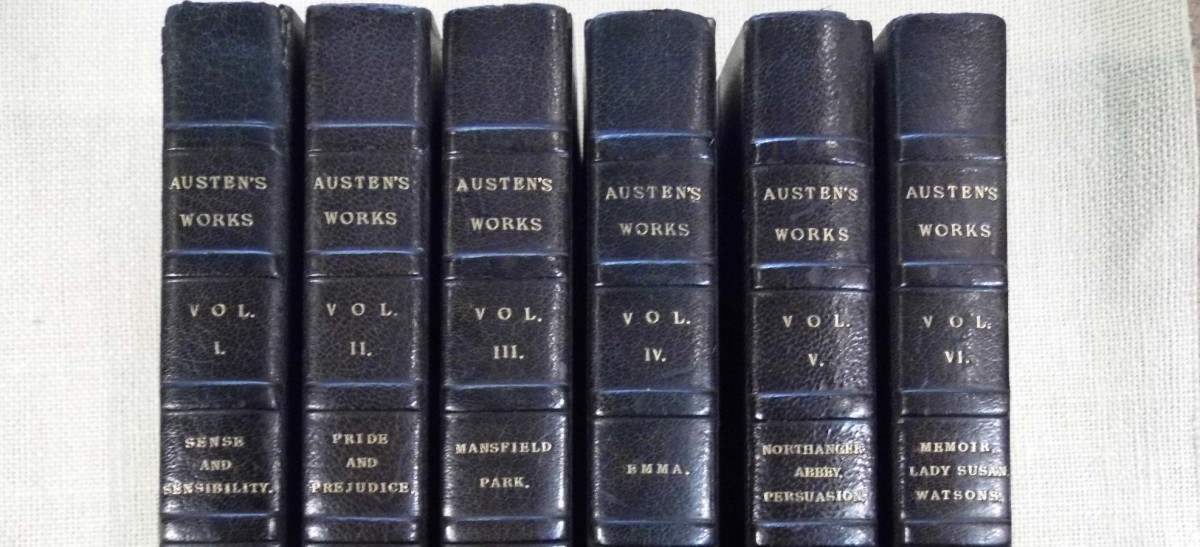Pride and Prejudice: Historical/Cultural Annotations
For this stage of our annotation work, we will focus on providing explanatory glosses for Austen’s language, allusions, and a wide variety of period-specific references. You will work together with other members of your “Novel Group” on the five-chapter section of Pride and Prejudice assigned to your group. Each member of the group is responsible for researching and writing at least five (5) annotations. We will hold three “annotate-a-thons” (April 11th, 23rd, and May 7th) where you will work together to identify what to annotate in your section, upload your prepared annotations to the “Annotating Austen” website using the Hypothes.is tool, and revise them as needed based on peer-critique work.
What follows are some guidelines for deciding what to annotate, what sources to consult for doing the research, and some notes on how to write a good annotation.
- What to annotate?
- Arcane or difficult words or phrases
- Familiar words or phrases that had a different meaning in Austen’s day
- Allusions to historical persons, including other authors or texts
- Allusions to historical events, ideas, or texts
- Allusions to ancient authors, myths, or texts
- References to social customs or traditions
- Geographical references
- Biblical or other religious allusions
- Proverbial phrases
- All foreign language words or phrases
- Researching your annotations
This is detective work and while it can be fun and satisfying, it can also be frustrating when you can’t seem to find a good source for the information you need. Not all sources are created equally. Because there needs to be scholarly consistency across our annotations, we will consult the following sources for specific kinds of annotations:
- Specific words or phrases: Oxford English Dictionary (online version available through our Library’s website). This source offers historical definitions; but read the entry carefully to make sure you have the right definition for Austen’s historical period. Cite as (OED).
- Samuel Johnson’s Dictionary of the English Language (1755). An excellent source for late-18thc. usage; available online at johnsonsdictionary.com. Cite as (Johnson).
- Captain Francis Grose’s A Classical Dictionary of the Vulgar Tongue is especially good for those words not found in OED or Johnson. Available as an ebook on Project Gutenberg. Cite as (Grose).
- English Dialect Dictionary. This is especially good for words you suspect might be part of a dialect of English spoken in a particular geographical locale, e.g. “Geordie” in Yorkshire, or “Broad Scots” in Scotland, etc. Available in print form in the Library; also available online. Cite as (EDD).
- All historical, cultural, literary, or geographical references: Feel free to start with a Google search; you may need to graduate to an “encyclopedia” type book, or a specific scholarly book as needed. For example, there are many books out there devoted to explaining the Regency-era social customs and manners found in Austen’s novels. If you paraphrase or quote from such a source, use short form citation, e.g. (Author Name, Short Title, page #s), at the end of your annotation.
- Biblical allusions: The best source to use for our purposes is the Oxford Companion to the Bible. Cite as (OCB).
- Proverbial phrases: Use the Oxford Dictionary of Proverbs. Cite as (ODP).
- Writing your annotations
There are several principles to keep in mind when composing a good annotation:
- Accuracy: Be sure that you have found the correct information; there is little room for speculation in an annotation.
- Stick to the Facts: Remember that you are providing information needed for a modern reader to understand the text; do not provide interpretive opinions or other subjective commentary.
- Economy: Nobody wants to read lengthy, rambling glosses. Distill the information you’ve found into a tightly worded sentence or two whenever possible. Do not feel the need to tell your reader everything you’ve learned about a specific historical or cultural reference. Paraphrase in your own words, providing the information that is most relevant to the context of the novel.
- Visuals
Let’s try to maximize the potential of the Hypothes.is platform and add visual material to our annotations whenever possible. See the “Getting Started” page on this website for details regarding uploading an image, or video link, to your annotation.
- Sources
Please keep track of all the sources—print and electronic—you use for your annotations. You will need to submit a “Works Cited” to me at the end of the semester (use MLA format).
